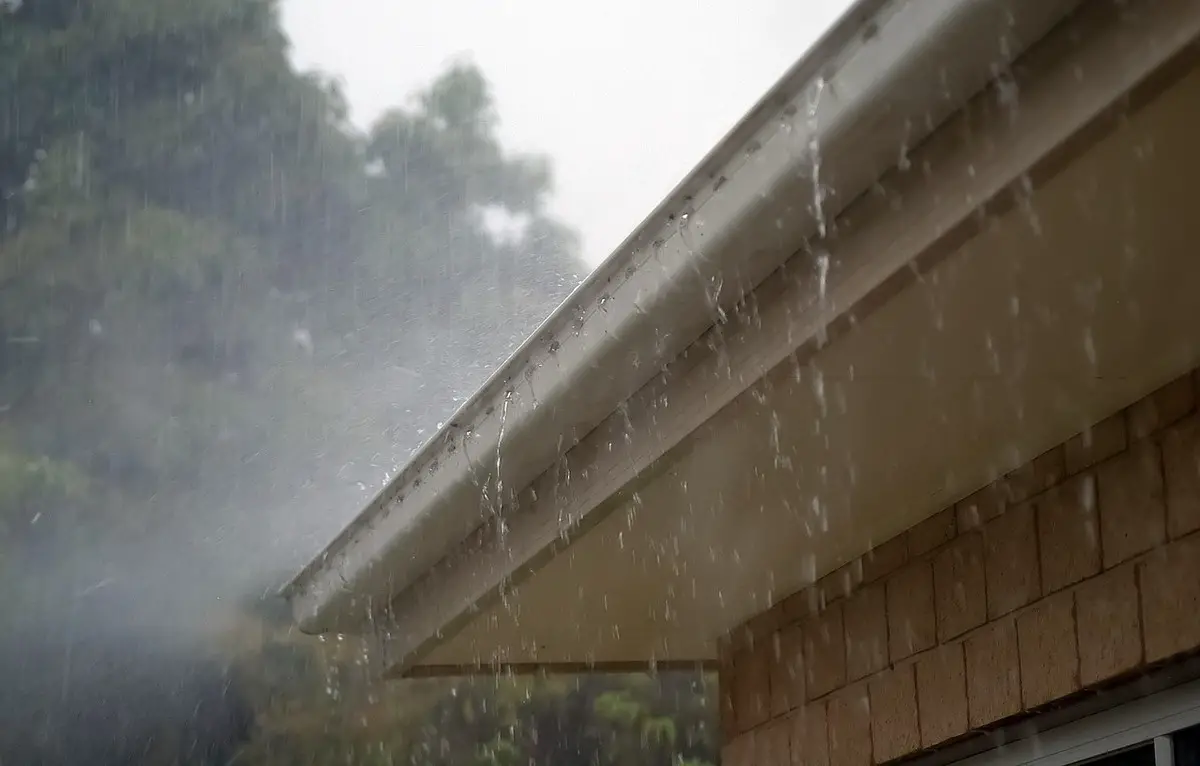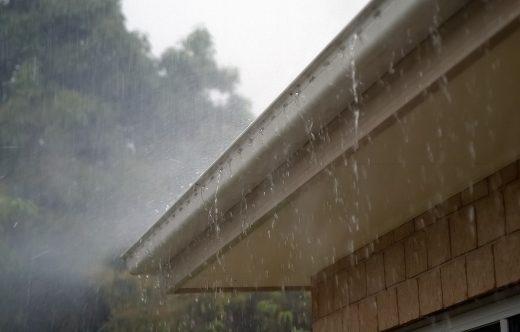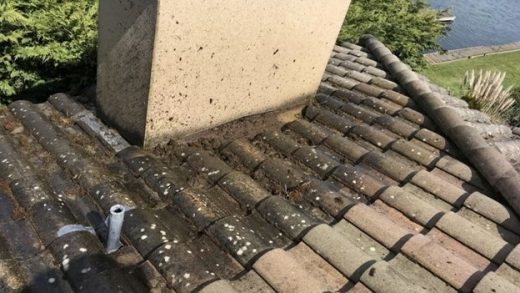Flat roof vs pitched guide, Protect home roofing differences and benefits, Property repair
Flat Roof vs Pitched Roof: Understanding the Key Differences and Benefits
2 August 2024
Choosing between a flat roof and a pitched roof can be a challenging decision for any homeowner or builder. Each style comes with its own set of advantages and disadvantages. Flat roofs are generally less expensive to install and can offer additional outdoor space, while pitched roofs provide better drainage and a longer lifespan.
Understanding your building’s needs and local climate is essential in making the right choice. Flat roofs can be simpler and more cost-effective but may face drainage issues. On the other hand, pitched roofs require more materials and can cost more initially but often result in lower maintenance costs over time.
As you weigh your options, consider factors such as aesthetics, energy efficiency, and the intended use of your roof. The right roof type can enhance your home’s value and performance, making this decision an important one for your property.
Fundamentals of Roof Types
Understanding the basics of flat and pitched roofs helps you make informed choices for your property. Each type has specific features, benefits, and considerations that are important for your building’s design and function.
Defining Flat Roofs
Flat roofs are almost horizontal surfaces that generally have a slight slope for water drainage. They are often made from materials like rubber, PVC, or modified bitumen.
Key Flat Roof Features:
- Cost-Effectiveness: Installation tends to be less expensive due to simpler structures and fewer materials.
- Space Utilization: Flat roofs can provide extra usable space, such as patios or gardens.
- Maintenance Needs: They require regular maintenance to prevent drainage problems and leaks.
While flat roofs can be modern and stylish, they often come with drawbacks like drainage issues and shorter lifespans. It’s essential to consider your climate and building use when thinking about this roof type.
Defining Pitched Roofs
Pitched roofs have a noticeable slope and are very common in residential architecture. They can be covered with materials like shingles, tiles, or metal panels.
Key Pitched Roof Features:
- Water Drainage: The slope helps direct rain and snow off the roof quickly, reducing water-related issues.
- Durability: Pitched roofs tend to last longer and may require less maintenance than flat roofs.
- Aesthetic Appeal: They often enhance the look of a home, contributing to curb appeal.
These roofs can be more expensive to install but may save you money in the long run due to their durability and lower maintenance costs. Consider the style, cost, and regional climate when deciding on a pitched roof.
Comparative Advantages
When choosing between flat roofs and pitched roofs, it’s essential to consider the unique benefits each option provides. Understanding these advantages will help you make a more informed decision based on your specific needs and setting.
Benefits of Flat Roofs
Flat roofs have several key advantages. First, cost-effectiveness is significant. Their simpler design often means lower installation costs. You can save money on both materials and labor when choosing this option.
Another benefit is their space efficiency. Flat roofs can be used for additional features like rooftop gardens or patios. This provides extra usable space without expanding the building’s footprint.
Maintenance is generally easier for flat roofs as they offer easy access for repairs or inspections. Water drainage systems, while crucial, can be upgraded to enhance performance and reduce issues.
Benefits of Pitched Roofs
Pitched roofs offer advantages that may suit different situations. A primary benefit is their ability to shed water and snow effectively. This means less risk of water damage or leaks in heavy rain or snow.
Durability is another strong point. Pitched roofs tend to last longer than flat roofs because their sloped surfaces reduce stress from water pooling. This design also helps prevent damage from debris accumulation.
You also get better ventilation and insulation with pitched roofs. The design supports airflow, which can keep your home cooler and reduce heating costs in colder months. Overall, this makes pitched roofs an appealing choice for many homeowners.
Design Considerations
When choosing between a flat roof and a pitched roof, aesthetic factors and architectural diversity are crucial. You should consider how each type enhances the visual appeal of your home and how it fits into different architectural styles.
Aesthetic Implications
The roof type greatly influences the overall look of your building. A flat roof offers a modern, minimalist appearance. It can provide a sleek profile that suits urban settings and contemporary designs.
On the other hand, pitched roofs often evoke a classic or traditional style. They come in various shapes, including gable, hip, or shed, which can enhance curb appeal. The slope can also create a more inviting silhouette.
You should also consider the color and material options available for both types. Flat roofs can be finished with various materials that can be painted to match the building. Pitched roofs typically use shingles or tiles, offering numerous color and texture choices that can complement your home’s design.
Architectural Diversity
When it comes to architectural styles, pitched roofs are more versatile. They fit well in traditional homes, coastal cottages, and even some modern designs. Their ability to shed snow and rain makes them practical in diverse climates.
Flat roofs are usually found in commercial and industrial buildings. However, they are gaining popularity in residential architecture, especially in modern designs. They allow for rooftop gardens or patios, promoting outdoor living spaces.
You should think about how the roof will impact your home’s functionality. A pitched roof can provide extra attic space for storage, while a flat roof could allow for additional outdoor usage. Each option has specific advantages to consider for your home’s overall design.
Construction and Materials
Choosing the right materials for your roof influences its durability, cost, and maintenance. Flat roofs and pitched roofs use different materials tailored to their design and function.
Common Materials for Flat Roofs
Flat roofs often use materials that provide effective waterproofing and durability. Some popular options include:
- Single-Ply Membranes: These lightweight sheets are made from materials like TPO or PVC. They are easy to install and provide good energy efficiency.
- Built-Up Roofing (BUR): This system uses layers of felt and asphalt. It’s strong and excellent for waterproofing but can be more labor-intensive to install.
- Modified Bitumen: This is an upgraded version of BUR and can be applied in different weather conditions. It offers flexibility and resistance to UV rays.
- EPDM (Ethylene Propylene Diene Monomer): A popular rubber roofing material, it is long-lasting and resistant to extreme weather.
These materials are designed to handle water pooling and require regular inspections.
Common Materials for Pitched Roofs
Pitched roofs commonly use a wider variety of materials. Choices include:
- Asphalt Shingles: These are the most common roofing material in North America. They are affordable, easy to install, and come in various colors.
- Metal Roofing: This includes aluminum, steel, and copper. Metal is durable and energy-efficient but can be more expensive upfront. Metal roofs can be installed over shingles if you don’t want to completely replace the current asphalt shingle roof.
- Slate Tiles: Known for their elegance, slate offers a long lifespan. However, it requires a sturdy structure due to its weight.
- Wood Shakes or Shingles: They provide a natural look and good insulation but require more maintenance to prevent rot.
Choosing the right material for a pitched roof depends on your budget, aesthetic preference, and climate.
Cost Analysis
When choosing between a flat roof and a pitched roof, understanding the costs involved is crucial. This section breaks down installation costs, maintenance expenses, and long-term value to help you make an informed decision.
Installation Costs
Installation costs can vary significantly between flat and pitched roofs. For flat roofs, you might spend approximately $3,200 to $10,700 in total, or around $4 to $13 per square foot.
In contrast, pitched roofs generally cost more. Installation can run between $5,800 to $12,500 or more, depending on materials and design complexity. Flat roofs tend to be cheaper due to simpler construction. Pitched roofs require more materials and labor, raising their cost.
Maintenance Costs
Maintenance costs can add up over time. Flat roofs often face issues like water pooling, which can lead to leaks. Regular inspections and repairs may cost you more in the long run.
Pitched roofs, while more expensive to install, usually require less frequent maintenance. The sloped design allows for better drainage, reducing the chance of water damage. However, keeping gutters clean and inspecting shingles is essential.
Long-Term Value
Considering long-term value helps you determine the best investment. Flat roofs generally have a lower initial cost, but maintenance issues may lead to higher expenses later.
Pitched roofs usually have a longer lifespan, often exceeding 20 years with proper care. They have better resale value. Potential buyers often prefer the aesthetic and functionality of pitched roofs. If you plan to stay in your home long-term, a pitched roof could provide better overall value.
Climate and Environmental Impact
When selecting between flat and pitched roofs, you must consider how each type performs under different weather conditions, their energy use, and their impact on the environment. Each roofing style has distinct advantages and drawbacks based on these factors.
Weather Resistance
Pitched roofs are designed to handle harsh weather more effectively than flat roofs. The sloped design allows rain and snow to slide off easily. This reduces the risk of water pooling, which can lead to leaks and structural damage.
In contrast, flat roofs can struggle in regions with heavy rainfall or snowfall. Standing water can accumulate, increasing the chances of leaks and deterioration. In snowy areas, the added weight of snow can also stress the roof structure. For these reasons, if you live in a region with extreme weather, a pitched roof might be the better choice.
Energy Efficiency
Energy efficiency varies between flat and pitched roofs. Flat roofs often have a membrane system along with rigid insulation, which can improve overall energy use. This setup helps maintain indoor temperatures, reducing heating and cooling costs.
Pitched roofs generally include an attic space which can add insulation but may also lead to heat loss if not designed properly. Efficient ventilation in pitched roofs can reduce the need for air conditioning during warmer months. You should consider your local climate when choosing the most energy-efficient option.
Environmental Sustainability
In terms of environmental impact, both roof types have unique benefits. Flat roofs offer opportunities for green spaces such as rooftop gardens, which can improve air quality and provide insulation. They can also support solar panels, enhancing energy production.
Pitched roofs may last longer, requiring fewer materials over time. Their slope can also minimize debris collection, reducing maintenance. Choosing sustainable materials for either roof can further lessen their environmental footprint. Consider your long-term goals for sustainability when deciding on your roofing style.
Maintenance and Durability
When considering flat roofs versus pitched roofs, maintenance and durability are critical factors. Each type has different lifespans and requirements, which can impact your decision.
Lifespan of Roofing Systems
The lifespan of roofing systems varies significantly between flat and pitched roofs. Most flat roofs need replacement or resurfacing every 10 to 20 years. For example, bitumen-based flat roofs often last around 10-15 years, while single-ply systems may last 20 years or longer, depending on conditions and materials used.
In contrast, pitched roofs are generally more durable. With proper maintenance, materials like asphalt shingles and metal can last 20 to 50 years or more. Their sloped design allows for better water drainage, reducing the risk of damage from moisture.
Maintenance Requirements
Flat roofs typically require more frequent maintenance. Regular inspections are essential to check for pooling water or debris buildup. Keeping these roofs clean can prolong their lifespan.
In contrast, pitched roofs are easier to maintain due to their slope. You should inspect them at least once a year, focusing on checking shingles, flashing, and gutters. The pitch helps prevent debris accumulation, which reduces maintenance needs.
Being proactive with maintenance for both types can improve durability and save you money in the long run.
Installation and Repair
When choosing between a flat roof and a pitched roof, installation and repair processes differ significantly.
Installation Process:
- Flat Roofs Installation: These roofs are generally easier and quicker to install. The simpler structure needs fewer materials and less labor. This can lower your initial costs.
- Pitched Roofs Installation: Installing a pitched roof can take more time and skill. The construction involves angles and layers, which may increase labor costs. This roof type often uses shingles, which require precise installation.
Repair Considerations:
- Flat Roofs Repair: These roofs are easier to access for repairs. You can walk on them and reach areas quickly. However, flat roofs can have drainage issues, which may require regular inspections to prevent leaks.
- Pitched Roofs Repair: Repairs can be more complex due to height and slope. While these roofs may be less prone to leaks, cleaning out debris from gutters and valleys is necessary for proper drainage. Shingles may also get blown off by high winds, which will require shingle replacement.
Cost Comparison:
| Roof Type | Installation Cost | Repair Ease |
| Flat Roof | Lower | Easier access |
| Pitched Roof | Higher | Harder to reach |
Understanding these aspects can help you decide which roof suits your needs best.
Regulatory and Safety Considerations
When choosing between a flat roof and a pitched roof, it is essential to consider local building codes. These codes can dictate the types of roofs allowed in your area.
Key Factors to Review:
- Building Codes: Check regulations regarding roof slope, materials, and load-bearing capacities.
- Zoning Laws: These may affect how high you can build and which styles are permissible.
- Permit Requirements: Some areas require permits for new roof installations, especially if changing roof types.
Safety is also crucial. Flat roofs may present hazards such as:
- Pooling Water: This can increase the risk of leaks or structural damage.
- Accessibility Issues: If maintenance is needed, walking on a flat roof can pose safety concerns.
Pitched roofs have advantages in this area:
- Drainage: Rain and snow slide off more easily, reducing water accumulation.
- Wind Resistance: Properly built pitched roofs can better withstand high winds.
Additional Safety Measures:
- Use proper safety gear during installation and maintenance.
- Ensure that your roof structure can support your chosen roofing material.
By addressing these regulatory and safety considerations, you can make an informed choice that meets both legal requirements and protects your home.
Comments on this guide to Flat roof vs pitched differences and benefits article are welcome.
Building Articles
Residential Architecture
Home Roofing
Property Roof Damage
Guide for building a pitched roof
How to spot early signs of roof damage

Roof Damaged By Hail here’s how to handle it
How different weather conditions affect fence screening
Comments / photos for the Flat roof vs pitched differences and benefits advice page welcome.





